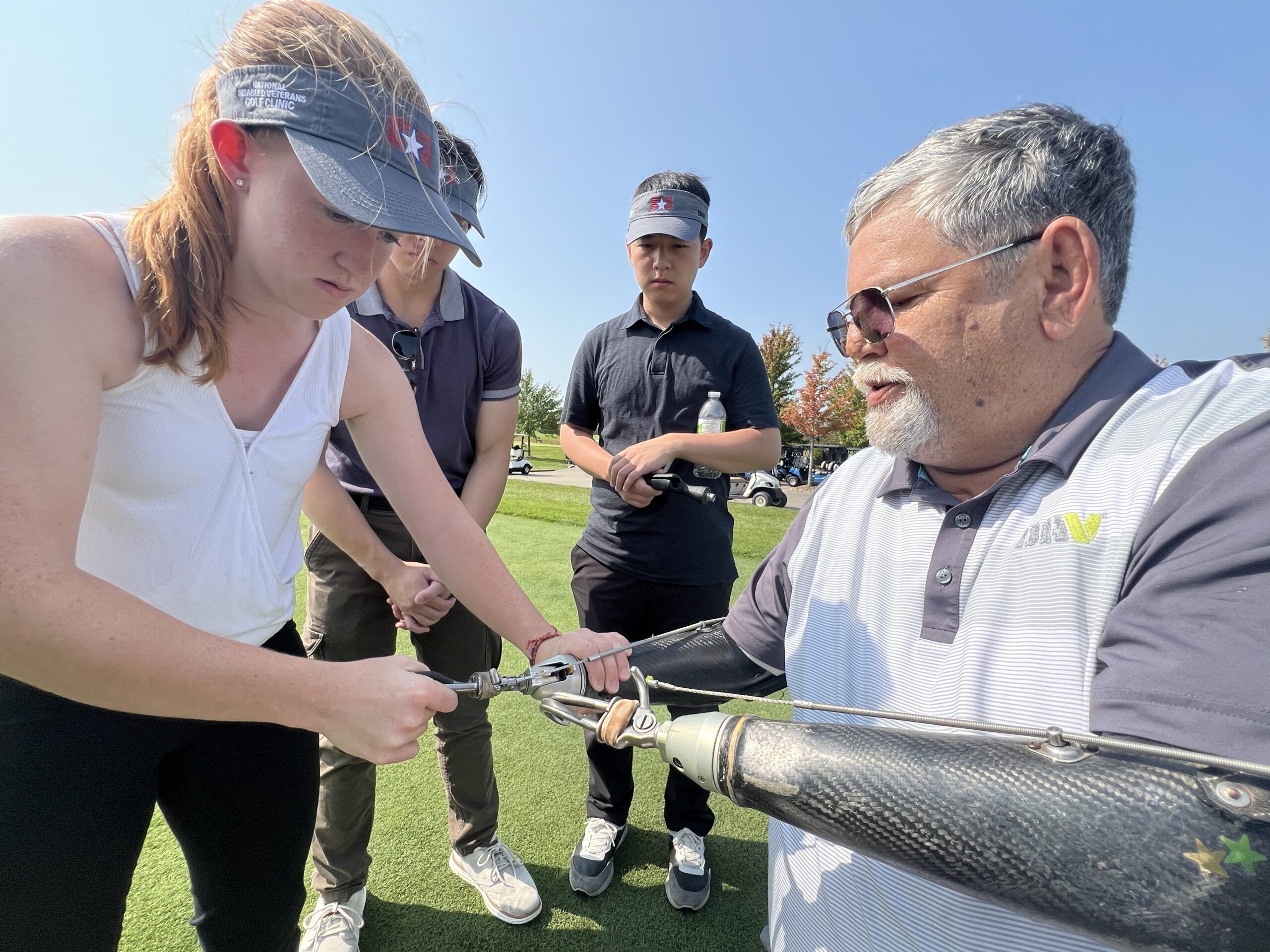Photo by Disabled American Veterans
Emily Myrick
A team of interdisciplinary engineering students is developing adaptive disc golf equipment to help veterans with disabilities—including partial quadriplegia and visual impairments—play more independently and with greater control.
Their solution includes two custom devices: a slingshot-style disc launcher with a crank mechanism that mimics a crossbow and can be secured onto a wheelchair, and a GPS-enabled armband that uses vibration and audio cues to help visually impaired players aim more precisely and locate a disc after a throw.
The students will present their project, developed in their Multidisciplinary Engineering Design course, on April 29 at the Whiting School of Engineering’s Design Day, an annual event showcasing students’ solutions to real-world problems. The project began as a partnership between WSE’s Center for Leadership Education and the Disabled American Veterans, which each year hosts the National Disabled Veterans Golf Clinic in collaboration with the U.S. Department of Veterans Affairs. The clinic introduces veterans with disabilities to adaptive golf and other recreational sports. The Hopkins team set out to improve existing adaptive equipment to better meet the needs of veterans wishing to play the sport.
“Disc golf was offered at the clinic as an alternative to traditional golf events, and because the sport is still developing, we saw an opportunity to improve the equipment currently available,” said team member Alexander Tinana, a senior majoring in materials science and engineering, who worked with mechanical engineering majors Isabella Allen and Kyungmo Choi and biomedical engineering major Amy Liu on the project.
Conversations with veterans and the clinic’s disc golf instructor revealed a clear need for a more functional and independent launching device, as available adaptive disc golf equipment is either homemade or manufactured in limited quantities. The team members learned that motorized disc launchers exist, but they wanted to avoid this option because of the limited interaction the product offers, making gameplay feel passive and less engaging, Tinana said.
“The lack of adjustability and inability to replicate the physical motion and involvement of throwing makes the available solutions insufficient for veterans aiming to get a more independent playing experience,” he said.
The student engineers also noted that beeping discs, which help visually impaired players locate thrown discs, are available on the market, but don’t provide aiming assistance. They also discovered these beeping products have drawbacks, including potentially triggering tinnitus in some users. They also found that relying on auditory feedback can be imprecise, especially as the player’s distance from the goal increases.
Alissa Burkholder Murphy, the team’s advisor, says that designing for an end user with significantly different life experiences than their own posed unique challenges for the students.
“They cannot design a successful solution by relying on their own instincts or personal testing. The team has done a great job of staying close to their users by traveling to a DAV sports clinic and arranging focus groups with veterans from local DAV branches to get feedback on prototypes,” she said. Earlier this month, the Paralyzed Veterans of America invited the students to visit the Richmond VA Medical Center to speak with veterans and test their prototypes. The students met with five veterans and two other members of the PVA, gathering valuable feedback on their prototype’s setup time, adjustability, ease of use, and effective throwing distance.
The users’ overall response to their prototype was positive, Tinana said.
“While they enjoyed the prototype, we also received many helpful suggestions. Some suggested we develop different shapes of handles for the winch and trigger, allowing people with varying degrees of quadriplegia to operate the launcher. Others suggested we integrate a motor aspect and emphasized that this would not hinder the independence of the user,” he said.
According to Burkholder Murphy, since most of the team members plan to graduate next month, further development of their devices will be handed off to others. The team hopes development can be continued through a future design team or a DAV partner who produces accessibility devices, so that disc golf can one day be easier for veterans with disabilities to navigate autonomously.

